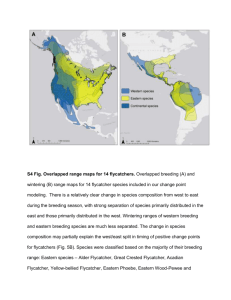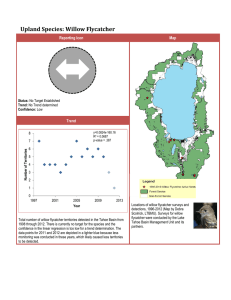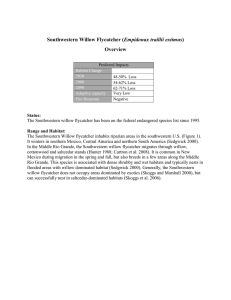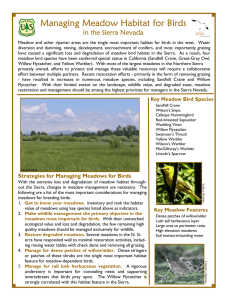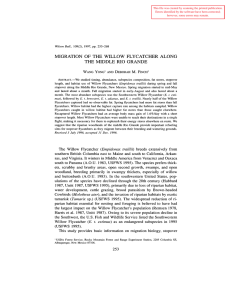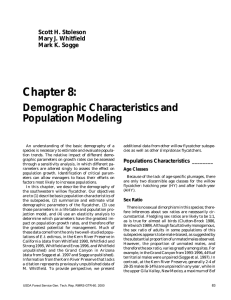February 13, 2012 California Department of Fish and Game
advertisement
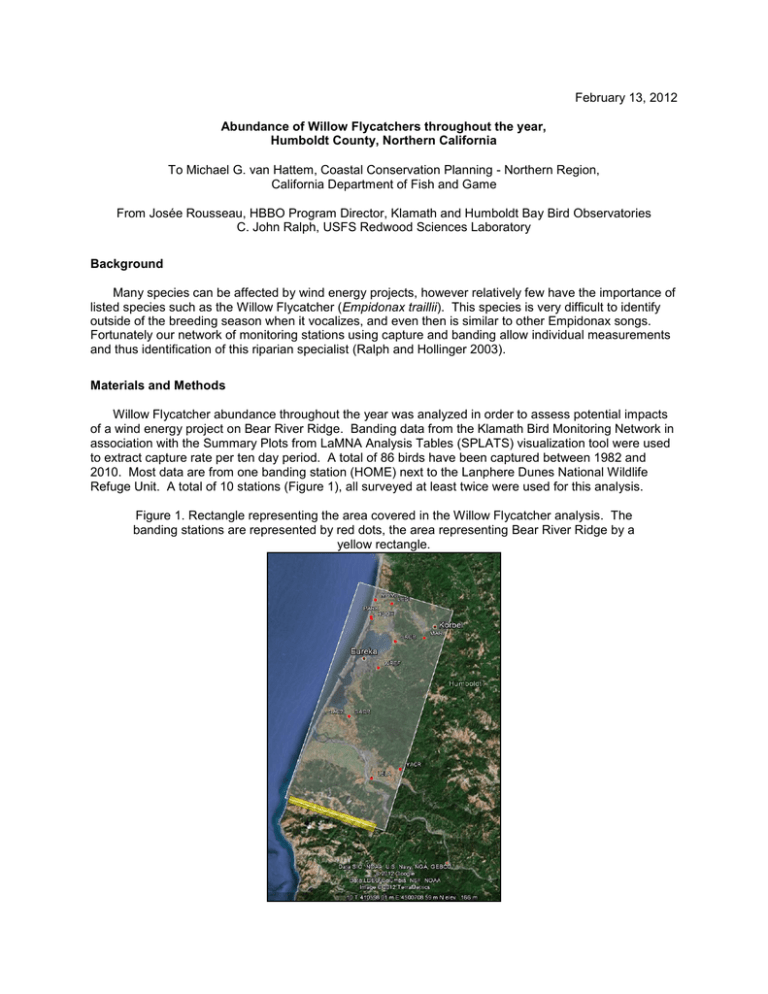
February 13, 2012 Abundance of Willow Flycatchers throughout the year, Humboldt County, Northern California To Michael G. van Hattem, Coastal Conservation Planning - Northern Region, California Department of Fish and Game From Josée Rousseau, HBBO Program Director, Klamath and Humboldt Bay Bird Observatories C. John Ralph, USFS Redwood Sciences Laboratory Background Many species can be affected by wind energy projects, however relatively few have the importance of listed species such as the Willow Flycatcher (Empidonax traillii). This species is very difficult to identify outside of the breeding season when it vocalizes, and even then is similar to other Empidonax songs. Fortunately our network of monitoring stations using capture and banding allow individual measurements and thus identification of this riparian specialist (Ralph and Hollinger 2003). Materials and Methods Willow Flycatcher abundance throughout the year was analyzed in order to assess potential impacts of a wind energy project on Bear River Ridge. Banding data from the Klamath Bird Monitoring Network in association with the Summary Plots from LaMNA Analysis Tables (SPLATS) visualization tool were used to extract capture rate per ten day period. A total of 86 birds have been captured between 1982 and 2010. Most data are from one banding station (HOME) next to the Lanphere Dunes National Wildlife Refuge Unit. A total of 10 stations (Figure 1), all surveyed at least twice were used for this analysis. Figure 1. Rectangle representing the area covered in the Willow Flycatcher analysis. The banding stations are represented by red dots, the area representing Bear River Ridge by a yellow rectangle. Results Coastal northern California has a relatively low number of adults along the riparian zones (Fig. 1 in red) and this sensitive method of capture identifies a small but persistent population. We find a peak of young Willow Flycatcher during the fall (average of about 0.1 birds per 100 net hours) shown in blue. Adults leave for their migration very abruptly and early in the summer and fall. This fall peak represents the southbound migration period for this species, i.e. early August to early October. The individuals observed in our region are most likely continuing their migration south, flying over Bear River Ridge. Birds per 100 net-hours Figure 2. Year round mean capture rate of Willow Flycatcher (and associated standard error). Julian Day In order to give a perspective about the abundance of Willow Flycatchers moving through, we produced a similar graph for a locally more abundant species of Empidonax, the Pacific-slope Flycatcher. Data shows a peak of Pac-slopes during spring migration (average of about 0.9 birds per 100 net-hours). During the fall migration substantial numbers move through the area, largely adults in the early part and the young moving through later. Birds per 100 net-hours Figure 3. Year round mean capture rate of Pacific-slope Flycatcher (and associated standard error). Julian Day Discussion We plan on continuing monitoring operations in the region, and will be able to provide such information in the future. Capture data provides a wealth of information about birds beyond abundance, allowing knowledge of the role that different species play in the habitats of interest, such as breeding, migration, and condition of the birds. These results highlight the importance of surveying year round i.e. not only during the breeding season. Literature Cited Ralph, C.J. and K. Hollinger. 2003. The status of the Willow and Pacific-slope flycatchers in northwestern California and southern Oregon. Pp 104-117 in Ecology and Conservation of the Willow Flycatcher. M. Sogge, B. Kus, S. Sferra, and M. Whitfield, eds. Studies in Avian Biology 26.



